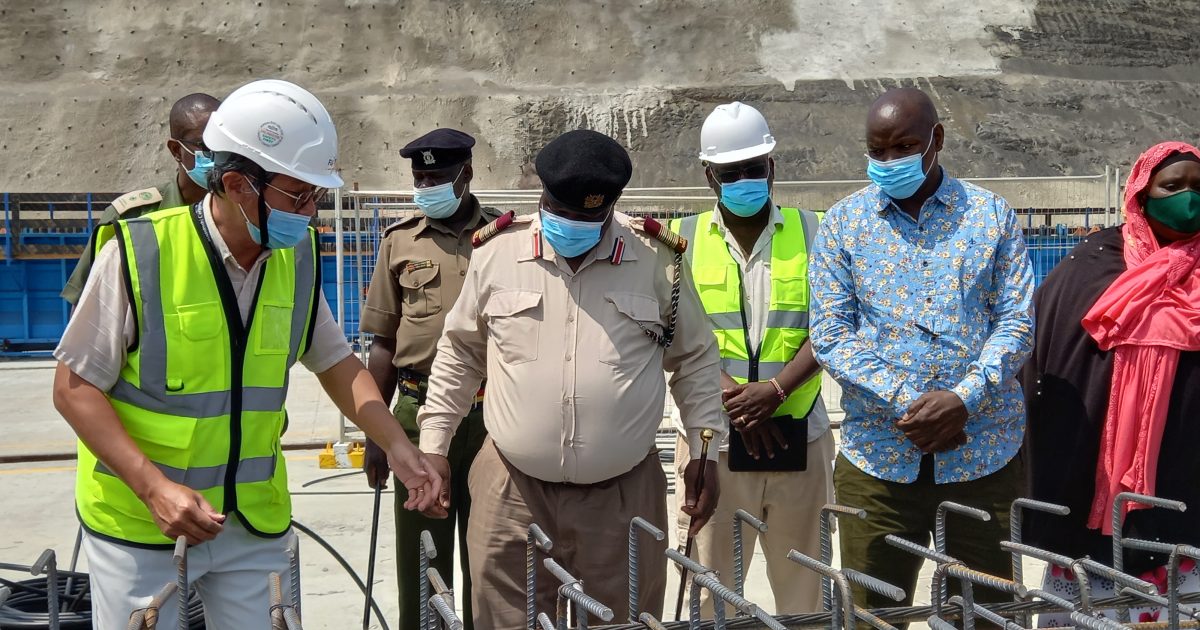Construction work on the multibillion-shilling phase two of the Dongo Kundu bypass is taking shape while creating jobs and business opportunities for the local residents.
The highway also known as the Mombasa Southern Bypass will connect three main transport corridors, including the Mombasa-Nairobi highway, Mombasa-Malindi highway and the Mombasa- Lunga Lunga highway and is expected to minimize traffic gridlocks in Mombasa and its environs.

Phase one of the bypass completed at a cost Sh39 billion was opened in 2018 and runs from Mombasa Port’s second container terminal and joins the Mombasa-Nairobi highway at Bonje, near Mazeras.
Phase two is expected to provide a solution to the notorious congestion at the Likoni Ferry, which is blamed for the slow economic activities and growth of the south coast region.
Ongoing construction of infrastructural projects worth billions of shillings that straddle Kwale and Mombasa are aimed at facilitating easy movement of goods, services and people hence boosting the economy of the coastal region.
The 17.7 km long bypass is taking shape as the China Civil Engineering Construction Corporation, is racing against time to complete the mega project scheduled to be completed by 2024.
Construction of the road commenced in earnest in March 2020 against a backdrop of Covid-19 uncertainties.
The dual carriageway project, expected to cost Sh22 billion, involves the construction of an interchange at the Likoni-Lunga Lunga highway and erection of two bridges one at Mwache – spanning 660 metres, and another at Mteza straddling 1,440 metres
China Based Construction Corporation says it has already covered 35 per cent of the work, with additional construction machines currently being deployed on the site.
The bypass, whose first phase of Sh11 billion was completed in 2018, includes the construction of a series of roads and bridges and viaducts (a long bridge-like structure) linking Mombasa West to the South Coast in Kwale.
Kwale County Commissioner (CC) Joseph Kanyiri who led members of the County Development Implementation Coordination Committee (CDICC) on site inspection, said the highway is an important transport corridor for traffic destined to and from Tanzania and from the interior of the country and beyond.
He noted that in the past, movement of goods was hindered since access to Mombasa Island from the mainland south, was through the Likoni ferry terminal.
Kanyiri said the construction company has made tremendous progress on the project raising hopes among area residents, adding that when completed, the bypass will connect Mombasa mainland west to Mombasa mainland south, without entering Mombasa Island through the Likoni crossing channel.
Site Engineer, Moses Mukira, said the construction of the 8.9 km dual carriageway between Mwache junction and Mteza is being built and the work is already 20 per cent complete.

“This is a transformational road project aimed at easing transportation in Mombasa and Kwale counties and is set to boost industrial development and enhance Mombasa port efficiency” he said.
The Engineer said initially work progress had been slowed down, following the issuance of travel restrictions, after the outbreak of the Covid -19 pandemic, resulting in delays.
“We have been implementing a range of protective measures such as social distancing to limit contact among co-workers and ensure our worksites could remain operational and ensure the project’s delivery schedule was not impacted negatively,” Mukiira said.
Mukiira called on the government through the National Land Commission, to speed up land compensation exercises to the residents around the project site such as the Tsunza area, who have been posing a great challenge to the progress of the project.
“The communities around the project site are posing a challenge as most of our property is vandalized and we have lost close to Sh900 million since 2018 to vandalism and theft of materials,” Mukiira said.
Eng. Mukiira said there is still significant construction work to do, but the scale of the mega project is becoming easier for people to grasp, as it takes shape.
“Right now we are in the thick of construction works and things are progressing on really well,” he told the CDICC team, adding that the project will in the long run relieve congestion on the existing infrastructure and unlock the economic opportunities in the region by helping spur businesses.
He said most of the remaining work in the second phase, involves the construction of a 660 meters long bridge at Mwache and another of 1.44 km at Mteza.
The third phase includes the construction of a six kilometer (6km) stretch of tarmac road, from the Mteza Bridge to the Likoni -Lunga Lunga highway at Ngombeni area.
Kanyiri expressed optimism that the government will soon address the issue of land compensation and resolve it amicably.
“The government is conducting an investigation to ascertain the true owners of the land to be excised and we appeal for a little patience,” he said.
Kanyiri warned against those vandalizing construction properties, saying more security officers will be deployed to deal with the criminals.
“We will not allow criminals hiding under community grievances to disrupt the progress of this project that is set to significantly ease traffic, thereby, reducing travel time and improving productivity,” he said.
The Administrator asked the residents to cooperate with the construction company, which has employed over 2,000 local labourers from the County thus empowering the community financially.
He noted that the infrastructure project once complete, will be delivering real economic benefits to the people in Kwale and Mombasa, adding that suppliers and subcontractors are already benefiting from the project so far.
By Raymond Zaka and Hussein




